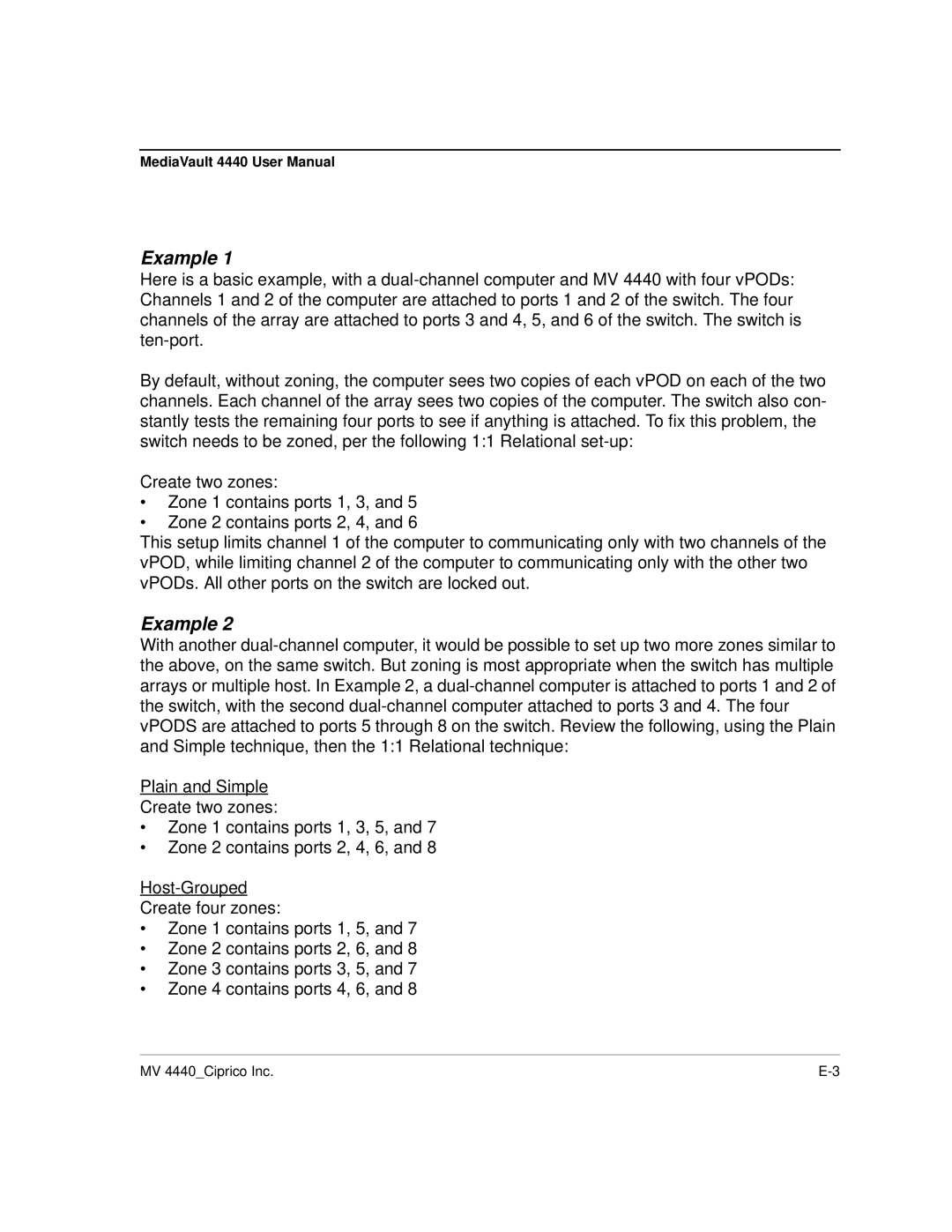
MediaVault 4440 User Manual
Example 1
Here is a basic example, with a
By default, without zoning, the computer sees two copies of each vPOD on each of the two channels. Each channel of the array sees two copies of the computer. The switch also con- stantly tests the remaining four ports to see if anything is attached. To fix this problem, the switch needs to be zoned, per the following 1:1 Relational
Create two zones:
•Zone 1 contains ports 1, 3, and 5
•Zone 2 contains ports 2, 4, and 6
This setup limits channel 1 of the computer to communicating only with two channels of the vPOD, while limiting channel 2 of the computer to communicating only with the other two vPODs. All other ports on the switch are locked out.
Example 2
With another
Plain and Simple
Create two zones:
•Zone 1 contains ports 1, 3, 5, and 7
•Zone 2 contains ports 2, 4, 6, and 8
Create four zones:
•Zone 1 contains ports 1, 5, and 7
•Zone 2 contains ports 2, 6, and 8
•Zone 3 contains ports 3, 5, and 7
•Zone 4 contains ports 4, 6, and 8
MV 4440_Ciprico Inc. |
